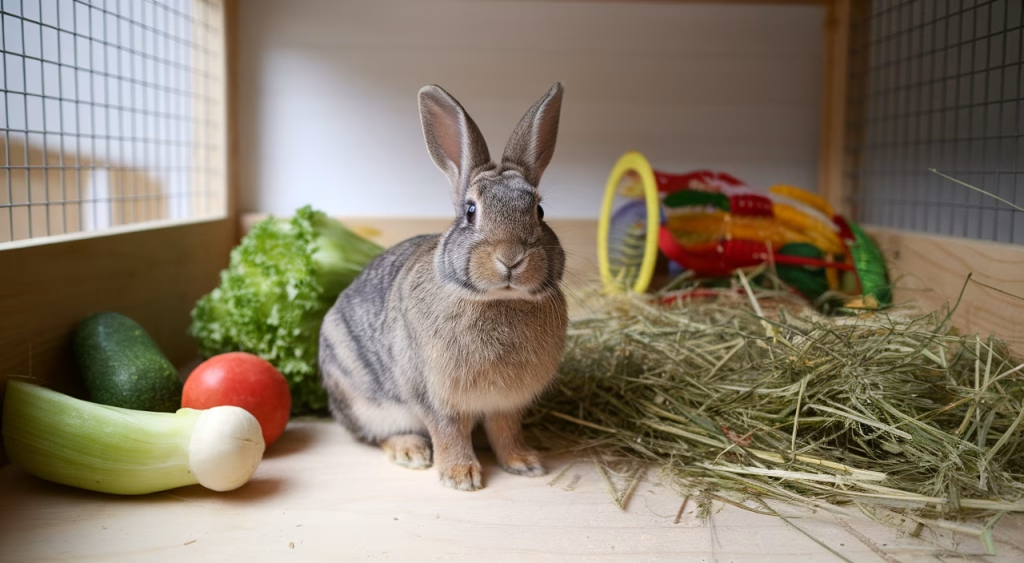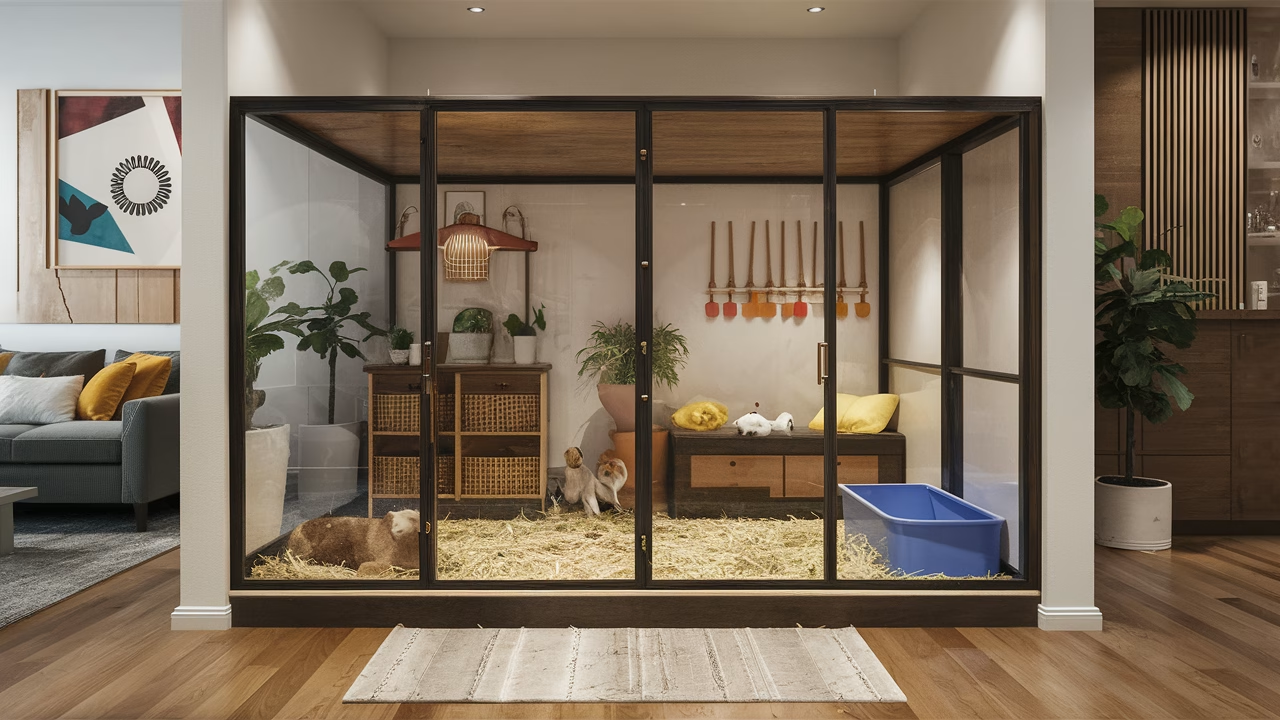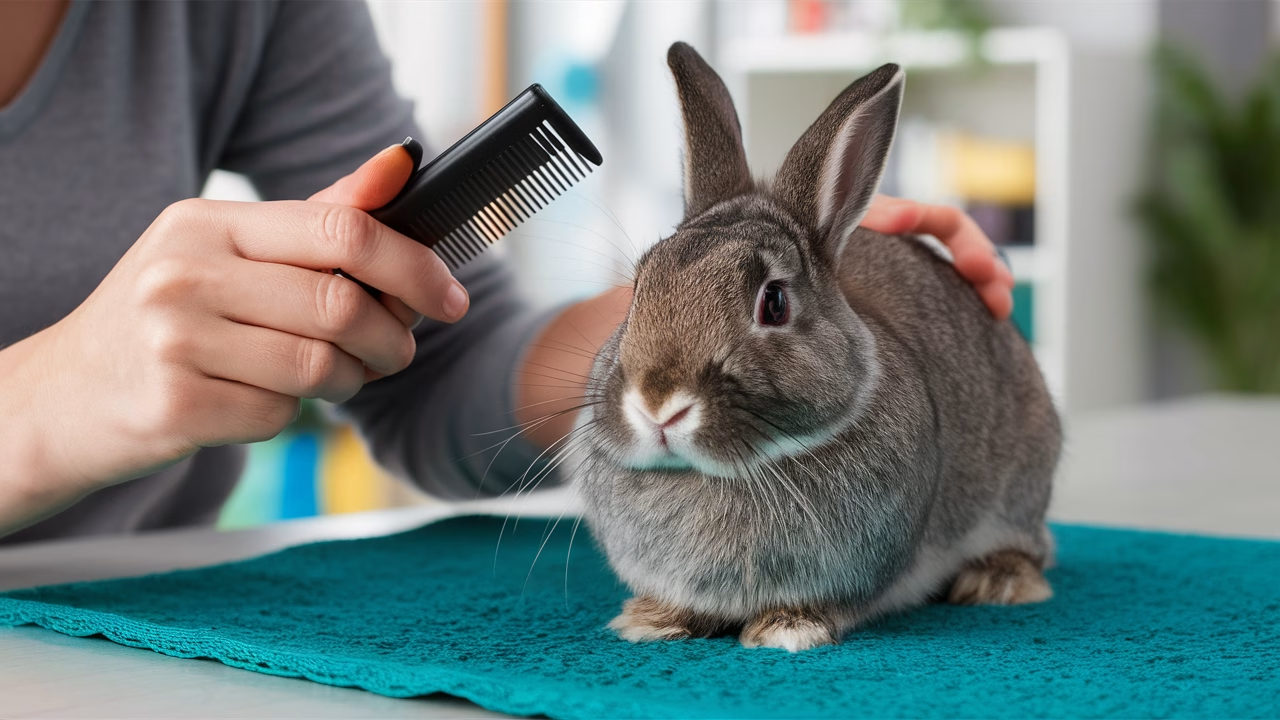How Can I Properly Care for My Pet Rabbit in Singapore?
Providing exceptional pet rabbit care in Singapore means adapting to our local climate, common housing conditions, and urban lifestyle. With the right rabbit care practices—from safe enclosure design to proper diet and grooming—you can give your bunny a thriving life in our tropical environment.
- Local climate considerations: Singapore’s heat and humidity significantly affect rabbit health and comfort levels.
- Urban housing adaptations: Learn how to create spacious indoor enclosures perfect for HDBs or condos.
- Social needs: Rabbits aren’t solitary animals; discover bonding techniques and companionship essentials.
- Rabbit diet: Explore the best fresh vegetables for pet rabbits and optimal pellet-to-hay balance.
- Exercise & grooming: Find indoor play space ideas for pet rabbits and quick rabbit grooming tips at home.
Whether you’re new to rabbit care or want to improve your current routine, this comprehensive guide provides science-backed pet rabbit care advice specifically tailored for Singapore’s unique environment.
1. Building a Safe and Secure Environment for Your Rabbit
Rabbits are curious, energetic creatures and—believe it or not—natural escape artists. Their enclosures must be both comfortable and secure. When designing your rabbit’s habitat, first determine the ideal placement. Singapore’s urban setting usually means indoor-only environments, so your rabbit enclosure safety design must account for space, ventilation, and easy maintenance.
Choose an enclosure large enough for your rabbit to stretch, explore, and show off those adorable zoomies. A good rule of thumb? At least three to four times the length of your bunny when fully stretched out. Use sturdy materials—plastic bases with metal bars work best—and reinforce edges to prevent chewing or accidental escapes.
Line the floor with soft but absorbent bedding. Add a litter box in one corner; most rabbits naturally prefer using designated areas with minimal training. Provide hiding spots for security and a raised platform for climbing to satisfy their exploratory instincts.
Essential rabbit enclosure safety tips:
- Keep all electrical cords completely out of reach.
- Eliminate sharp objects or small items rabbits could chew or swallow.
- Secure windows and balconies—rabbits can jump much higher than you’d expect.
Creating an enriching but secure habitat helps simulate natural behaviors while reducing stress and boredom—key factors in maintaining optimal rabbit wellness long-term.
2. Providing a Balanced Diet and Proper Nutrition
Understanding why hay dominates every proper rabbit diet is crucial—it’s not just filler. Hay is absolutely critical for healthy digestion and dental maintenance. About 80% of your rabbit’s daily food intake should consist of high-quality hay, such as timothy or meadow varieties.
2.1 The Importance of Hay, Vegetables, and Pellets
A complete, balanced rabbit diet consists of:
| Component | Percentage | Purpose |
|---|---|---|
| Hay | 80% | Promotes healthy digestion and naturally wears down teeth |
| Fresh Vegetables | 10% | Provides essential vitamins and proper hydration |
| Pellets | 5% | Supplements fiber and nutrients |
| Treats (carrots/fruits) | 5% | Used sparingly as training incentives or bonding tools |
Best fresh vegetables for pet rabbits include: romaine lettuce, bok choy, coriander (cilantro), basil, and small amounts of carrot tops. Always avoid iceberg lettuce and starchy vegetables, as these can lead to serious digestive upset.
2.2 Treats and Snacks: Finding the Right Balance
It’s incredibly tempting to hand out a carrot whenever your bunny gives you that irresistible nose nudge—but moderation is absolutely crucial for rabbit care. Too much sugar, even from natural sources, can cause obesity and dangerous gut disruption in rabbits. Offer sugary produce like apples or carrots only two to three times per week in small chunks.
Avoid commercial treats containing preservatives or dairy ingredients. Instead, opt for dried papaya or unsweetened banana slices—but only as occasional bonuses for good behavior or bonding sessions.
3. Ensuring Playtime and Exercise for a Healthy Rabbit
Don’t let their adorable fluff fool you—rabbits are naturally built to move extensively. In the wild, they cover large areas daily foraging, socializing, and digging. To mirror these instinctual needs, we must provide adequate space and opportunities for indoor exercise and mental stimulation.
Creative indoor play space ideas for pet rabbits:
- Set up a completely bunny-proofed room with soft flooring and cardboard tunnels.
- Create an engaging obstacle course using boxes, ramps, and strategic furniture spacing.
- Add chew-safe toys: wooden blocks, sisal balls, or paper towel roll puzzles for mental stimulation.
Regular exercise reduces behavioral problems and improves circulation, flexibility, and overall mental health. Aim for at least 3 hours of supervised free-roam play daily. Remember, supervision is essential—safety always comes first in proper rabbit care.
Want to see what a joyful, playful bunny looks like in action? Here’s a helpful visual guide:
4. Grooming Your Rabbit: Hair and Nail Care Essentials
While rabbits naturally groom themselves throughout the day, they still need regular human assistance. Long-haired breeds like Angoras require daily brushing, but even short-haired varieties need weekly fur care to prevent matting and dangerous fur ingestion (hairballs are a serious concern since rabbits cannot vomit).
Essential quick rabbit grooming tips at home:
- Use a quality slicker brush or flea comb to remove loose hair during molting seasons.
- Trim nails every 4–6 weeks using specialized small animal nail clippers. Always avoid cutting into the quick—it bleeds easily and causes pain!
- Regularly check ears for mites and examine the backside for stuck feces, often indicating digestive issues.
4.1 DIY Grooming Techniques vs. Professional Help
If you’re nervous handling grooming tools or your rabbit becomes particularly squirmy during grooming sessions, it’s better to consult a veterinarian or professional groomer experienced with rabbit anatomy. Incorrect handling can cause significant stress or even physical injury. Some rabbits—even typically calm ones—may kick out violently during nail trimming procedures.
5. Veterinary Care and Regular Check-Ups
Just like cats and dogs, rabbits require regular veterinary visits for optimal health maintenance. In Singapore’s humid climate, rabbits can become particularly prone to skin conditions, ticks, and mites that require professional attention.
Schedule comprehensive checkups every 6 to 12 months. Essential rabbit health services include:
- Thorough teeth checks (overgrown molars can cause severe pain and eating difficulties)
- Complete parasite control and prevention
- Vaccinations (as specifically advised by rabbit-experienced veterinarians)
- Weight assessments and personalized nutrition guidance
Always watch for subtle signs of health issues: decreased appetite, limited droppings, excessive hiding, or unusual head tilting. Remember, rabbits are prey animals—they naturally hide illness very well, making regular observation crucial.
6. Understanding Rabbit Companionship and Social Needs
Rabbits are inherently social beings with complex emotional needs. In wild environments, they live in colonies with intricate social hierarchies. Keeping a solo rabbit can potentially lead to boredom, depression, or behavioral issues unless you provide exceptional enrichment and consistent attention.
When introducing a companion, follow these essential steps:
- Choose same-sex pairs or ensure both rabbits are neutered/spayed to prevent unwanted litters.
- Always quarantine new rabbits and carefully supervise all initial interactions.
- Use a completely neutral, stress-free location for introductions.
Proven easy ways to bond with pet rabbits: hand-feeding favorite vegetables, gentle forehead pets, reading quietly beside them, or building tunnels they can explore with you nearby. Patience truly pays—a well-bonded bunny sees you as part of their trusted herd.
7. The Significance of Cleanliness in Your Rabbit’s Environment
7.1 Maintaining Hygiene and Sanitization
A consistently clean environment is fundamental to rabbit health. Spot-clean daily: remove droppings, uneaten vegetables, and wet bedding promptly. Deep-clean the entire enclosure weekly using mild vinegar solution and rinse thoroughly. Toys and mats should also be regularly scrubbed or replaced to prevent harmful bacterial buildup.
Consistent cleaning significantly reduces disease risk, especially flystrike—a serious concern in warm, humid climates like Singapore’s, where flies can lay eggs in dirty fur areas, leading to dangerous larval infections that can be both disgusting and potentially fatal.
8. Managing Temperature for Your Rabbit’s Well-Being
Rabbits are extremely temperature-sensitive creatures. Singapore’s consistent 26–32°C temperatures may feel manageable to humans but can prove dangerously warm for our fluffy companions. They’re most comfortable in the safe temperature range for pet rabbit habitats between 18–23°C.
Safe temperature range for pet rabbit habitats:
| Temperature | Rabbit Reaction | What to Do |
|---|---|---|
| 15°–23°C | Optimal comfort zone | No special action needed beyond ensuring good ventilation |
| 24°–28°C | Tolerable but warm | Provide ceramic tiles, fans, or cooling mats for relief |
| Above 29°C | Dangerous heat levels | Use air conditioning or cooling packs; ensure constant hydration |
Never place rabbit enclosures in direct sunlight exposure. During particularly hot periods, freeze water bottles and wrap them in towels for rabbits to lean against for cooling relief. Proper hydration is absolutely key—check and refill water bottles daily.
9. Proper Handling Techniques for Agitated Rabbits
When handled properly and gently, most rabbits can learn to enjoy being cuddled—but many initially feel anxious about being picked up. Their natural instincts scream “flight,” not “hug me!”
Instead of grabbing spontaneously, allow your rabbit to approach you first. Gently scoop with one hand positioned under the chest and the other supporting the hindquarters securely. Never attempt to hold rabbits by their ears or legs—this causes pain and panic.
Recognize signs that your rabbit feels agitated: foot thumping, growling sounds, or lunging behavior. When these occur, back off immediately and try again later with slower movements and calm, reassuring tones.
Frequently Asked Questions
- How much time should my rabbit spend outside its enclosure daily?
At least 3 hours minimum, ideally more. Active play significantly boosts health and prevents boredom-related issues. - Can rabbits live alone successfully?
They can, but meeting their social needs becomes more challenging. Human interaction must be much more frequent and engaging. - What are common signs of illness in rabbits?
Watch for lethargy, loss of appetite, loose stool, teeth grinding, or excessive hiding behavior. - Do I need to bathe my rabbit regularly?
Never fully submerge your rabbit in water. Only spot-clean when necessary using pet-safe wipes. - What temperature is too hot for a rabbit?
Anything consistently above 29°C can cause dangerous heat stress or potentially fatal heatstroke. - What’s a good toy for rabbits?
Cardboard tunnels, willow chew balls, untreated wood blocks, and puzzle feeders provide excellent enrichment.





